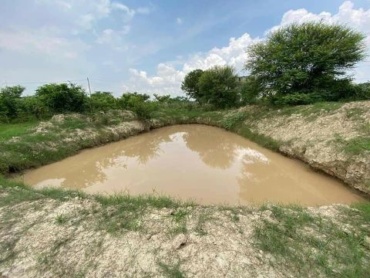Many countries worldwide, specifically India are facing water scarcity. There is one way out of this problem: Digging our land and making artificial ponds. One common question that pops up after hearing this solution is – What will be the source of water? Digging a pond is not a tough task but from where will the water come for that pond? All you need to have is patience. The water will naturally come in form of rains. But one should be ready with their small pond before the monsoon starts.
How to create a pond?
One should always start with a small pond and then expand it slowly. There is no rocket science involved in creating a pond. All work can be done manually. Just dig a small pit until it takes shape of a small pond. And never cement it from the bottom or put unnecessary stones in it, just keep it natural. Also, make sure that the slope around the pond is such that water keeps flowing down from the adjacent areas. Don’t anticipate much about the planning. After the rains, water will run down 2-3 times and the pond will become dry but the 4th time the pond will retain the water.
Benefits of creating a pond
- As the pond will start retaining water, one can see tadpoles, frogs, many fishes and aquatic plants, in short, aquatic life establishes, which adds to the biodiversity of the area.
- The vegetation of the area benefits from the pond.
- The water table level gets up because of the ponds.
- It affects the flora fauna of the surroundings.
- Also, the temperature of the area gets affected because of the presence of the pond; it tends to become cooler.
So start digging as many ponds as you can. Always start with the small ones. This is the best way of water conservation. Because the source of the water is only rainwater, all we can do is create enough reservoirs to harvest that rainwater.
Happy Digging!
